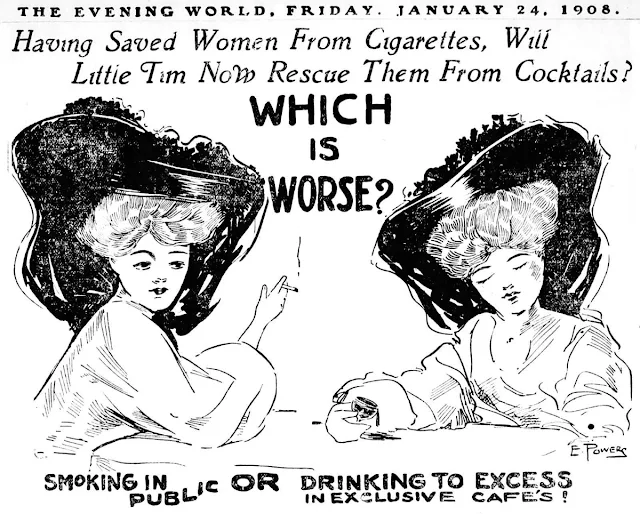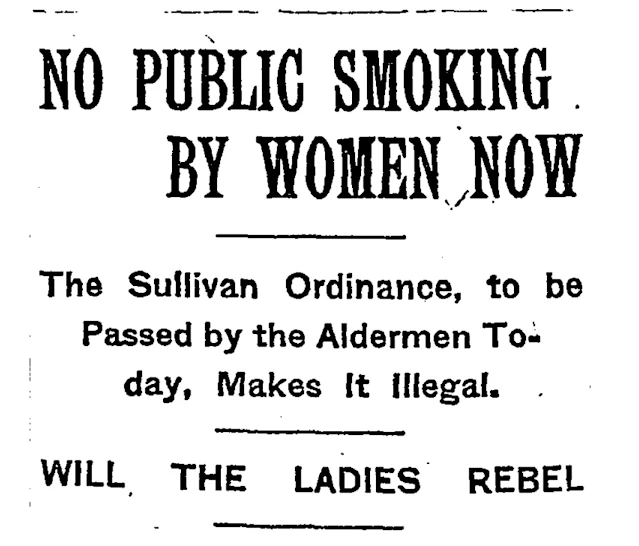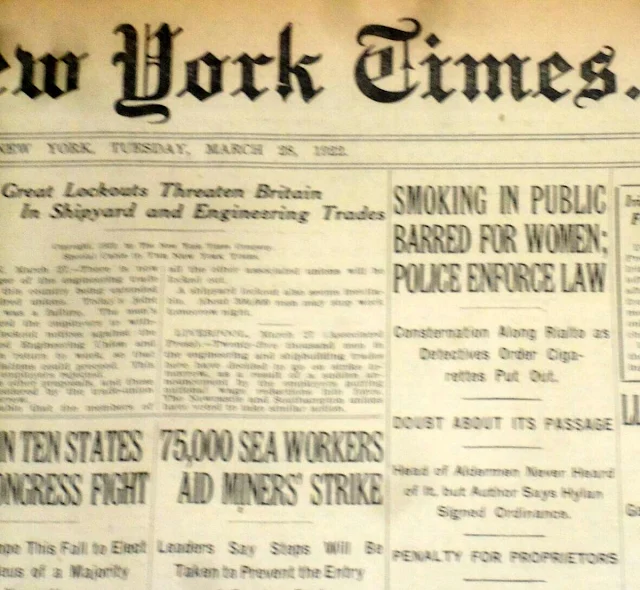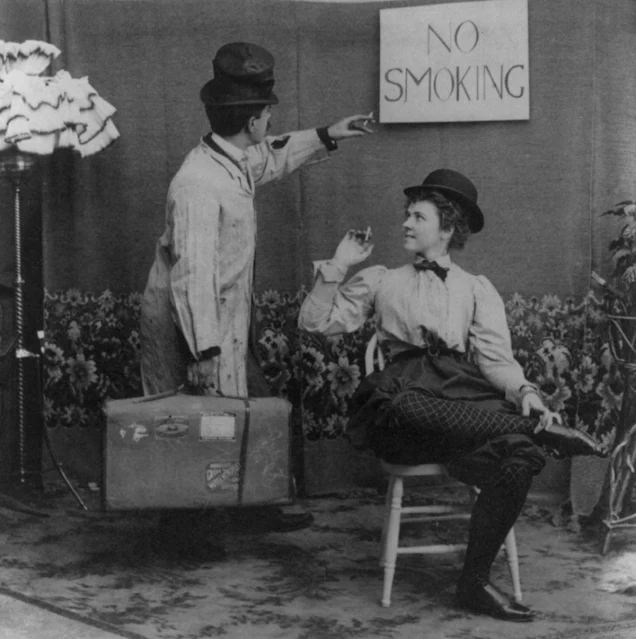On January 21, 1908, New York City passed a controversial ordinance that made it illegal for women to smoke in public. This ordinance, known as the Sullivan Ordinance, was proposed by Alderman Timothy “Little Tim” Sullivan. The law was unique in that it did not directly punish women for smoking but placed the responsibility on business owners to prevent women from lighting up in public places.
Timothy Sullivan, who proposed the ordinance, had never actually seen a woman smoke in public. However, he found the idea so distasteful that he believed it warranted a law. The ordinance quickly passed, with the Committee on Laws of the Board of Aldermen voting unanimously in favor of it. Sullivan’s motivation seemed to stem from his personal repulsion rather than any widespread public demand.
The public reaction to the ordinance was mixed. Many people, especially women, saw it as an unfair and discriminatory law. Mary Garrett Hay, the head of the New York City League of Women Voters, was one of the vocal opponents. She argued, “If they are telling the women they must not smoke in public they should tell the men not to also. It is perfectly ridiculous. Women should not be discriminated against in any way.” Her statement highlighted the gender inequality inherent in the ordinance.

The day after the ordinance was enacted, an incident occurred that would bring even more attention to this controversial law. Katie Mulcahey, a woman who had not heard of the new ordinance, was cited for smoking in public. When she refused to pay the $5 fine, she was arrested. Mulcahey’s defiance was captured in her bold statement to the judge, “I have never heard of this new law and I don’t want to hear about it. No man shall dictate me.” Her arrest and subsequent release the next day made headlines and intensified the public debate over the ordinance.
Katie Mulcahey’s case was not only significant because she was the first and only person cited under the ordinance but also because it exposed the absurdity and unfairness of the law. The ordinance did not explicitly mention fines nor did it ban women from smoking in public. This ambiguity and the selective enforcement against Mulcahey underscored the discriminatory nature of the law.

Mayor George B. McClellan Jr. vetoed the ordinance two weeks after it was enacted. His veto effectively nullified the law, making it a short-lived and controversial piece of legislation. However, the saga did not end there. The incident with Mulcahey and the subsequent veto had unexpected consequences. New York’s chief legal officer declared that women could smoke in public without fear of legal repercussions. This declaration set a precedent, signaling a shift towards gender equality in public activities.

The Sullivan Ordinance and the events surrounding it became a rallying point for women’s rights activists. The law may have been intended to restrict women’s behavior, but it ultimately contributed to the broader fight for gender equality. A little over a decade after the ordinance, women were granted the right to vote with the passage of the 19th Amendment in 1920.
The Sullivan Ordinance is a remarkable example of how a seemingly minor law can have far-reaching implications. It highlighted the prevailing gender biases of the time and sparked a public dialogue about women’s rights. The law’s brief existence and its subsequent overturning by Mayor McClellan demonstrated the power of public opinion and legal authority in challenging discriminatory practices.
In the broader context of the early 20th century, the Sullivan Ordinance was one of many battles fought over women’s rights. During this period, women were challenging traditional gender roles and advocating for greater freedom and equality. The ordinance, although short-lived, became a symbol of the ongoing struggle for women’s autonomy and the right to participate fully in public life.

Smoking, which had previously been considered a male activity, was becoming more common among women. This shift was part of a larger trend towards greater social and cultural freedom for women. The backlash against the ordinance demonstrated that many people recognized the need for these changes and were willing to fight against outdated and discriminatory laws.



GIPHY App Key not set. Please check settings